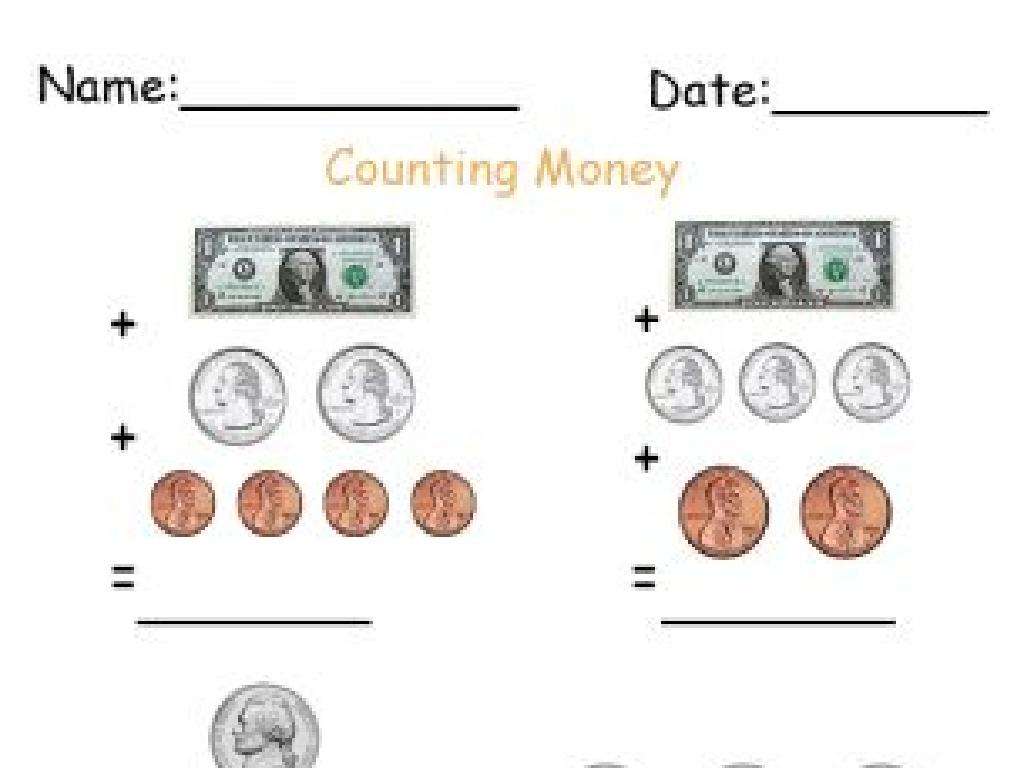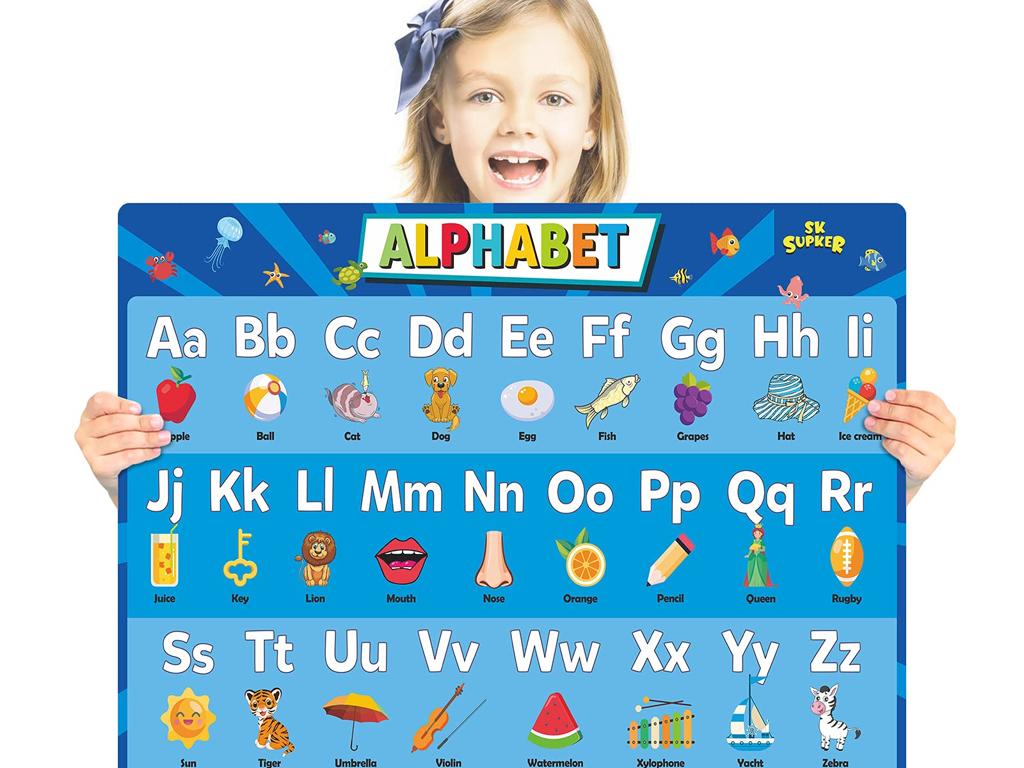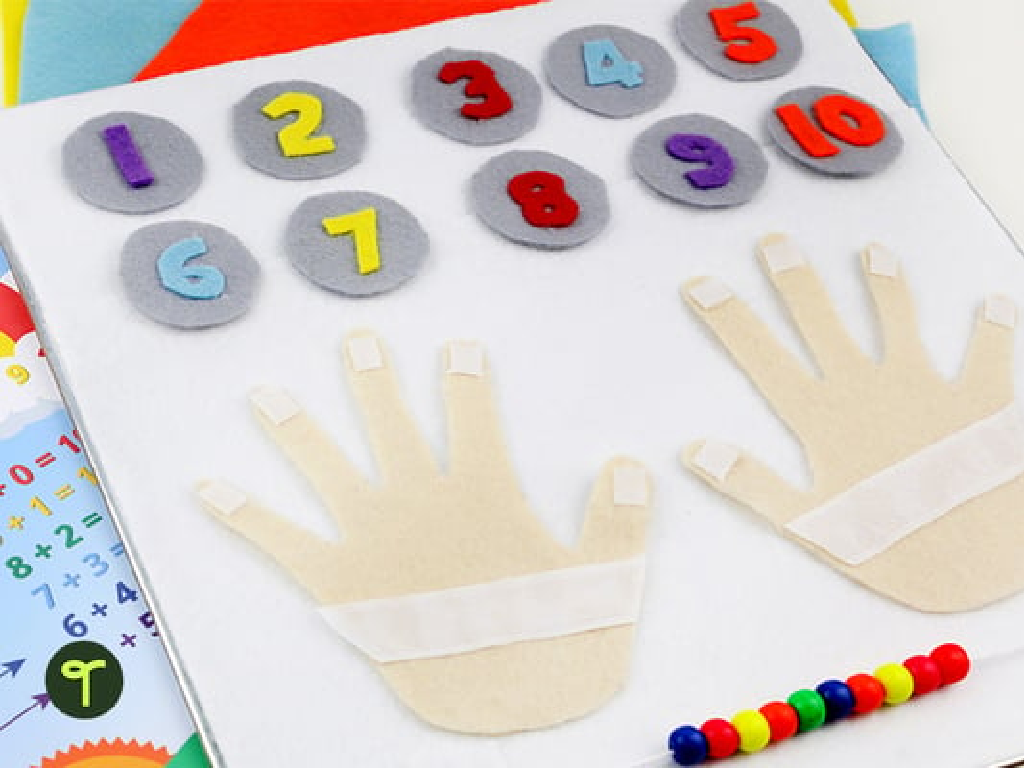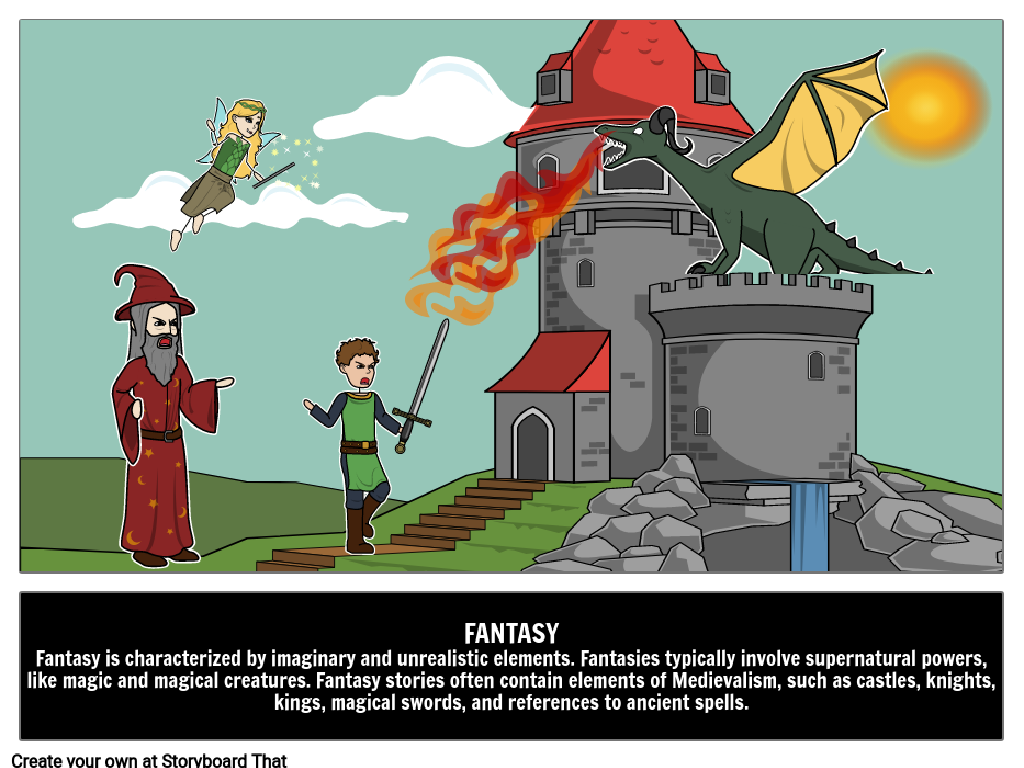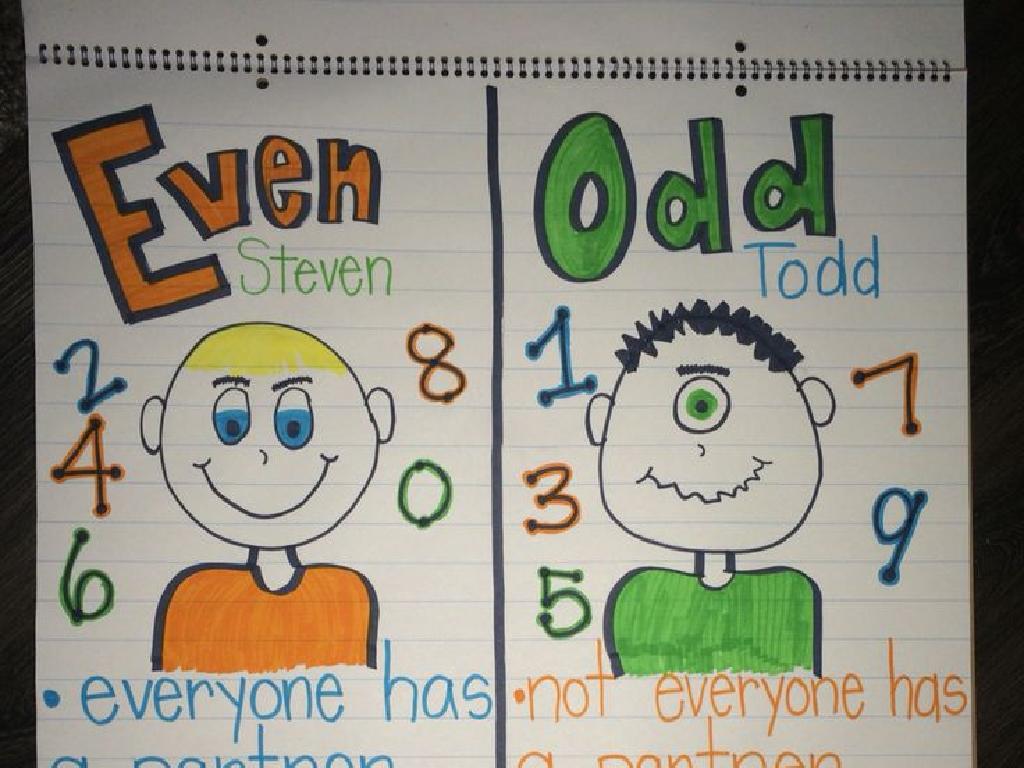Homophones With Pictures
Subject: Language arts
Grade: Second grade
Topic: Homophones
Please LOG IN to download the presentation. Access is available to registered users only.
View More Content
Welcome to Homophones!
– What are Homophones?
– Words that sound alike but have different meanings and spellings.
– Sound the same, different meanings
– Different spellings
– Examples: ‘to’, ‘two’, ‘too’
– ‘to’ (direction), ‘two’ (number 2), ‘too’ (also)
|
Homophones are words that sound the same when we say them, but they have different meanings and are spelled differently. An example to illustrate this is the words ‘to’, ‘two’, and ‘too’. ‘To’ is used when we’re talking about direction, like ‘going to school’. ‘Two’ is the number after one. ‘Too’ means also, like ‘I want ice cream too’. It’s important to know the difference because using the wrong one can change the meaning of our sentences. For the next class, students can bring in their own examples of homophones, or you can create a fun matching game with homophone pairs for them to play.
Fun with Homophones!
– What are homophones?
– Words that sound the same but have different meanings and/or spellings, like ‘to’, ‘two’, and ‘too’.
– Homophones make English fun
– They add humor and variety to our language.
– They can be tricky to learn
– Let’s learn homophones together
– We’ll use pictures and games to understand homophones better.
|
This slide introduces the concept of homophones to second graders, emphasizing that while they can be challenging, they also make learning English enjoyable. Start by explaining what homophones are with clear examples. Highlight how homophones can make language interesting and fun, perhaps by using jokes or riddles. Acknowledge that homophones can be confusing but reassure students that with practice, they can master them. Engage the class with interactive activities like matching games or picture-based flashcards to reinforce their understanding of homophones in a supportive and collaborative environment.
Homophones: ‘To’ and ‘Two’
– ‘To’ is for direction
– Like in ‘going to the park’
– ‘Two’ means the number 2
– As in ‘I have two cats’
– Examples using ‘to’ and ‘two’
– ‘I am going to the zoo.’ / ‘She has two pencils.’
– Think of your own sentences
|
This slide introduces the concept of homophones to second graders, focusing on the pair ‘to’ and ‘two’. ‘To’ is a preposition often used to indicate direction, while ‘two’ is the spelling for the number 2. Provide clear examples for each word, and use pictures to visually represent the meanings. Encourage students to come up with their own sentences using ‘to’ and ‘two’ to reinforce their understanding. This activity will help them distinguish between the two homophones in both spoken and written language. For the next class, students can share the sentences they’ve created, allowing for a review and discussion of their understanding.
Homophones: ‘Flower’ vs ‘Flour’
– ‘Flower’: A beautiful plant
– ‘Flour’: Used in baking
– Sentence with ‘flower’
– ‘The flower in the vase is bright and colorful.’
– Sentence with ‘flour’
– ‘We need more flour to make the cake batter.’
|
This slide introduces the concept of homophones to second-grade students using the words ‘flower’ and ‘flour’. Begin by explaining that homophones are words that sound the same but have different meanings and spellings. Show pictures of a flower and a bag of flour to visually reinforce the concept. Then, guide the students to use each word in a sentence, helping them understand the context in which each word is used. Encourage the students to think of their own sentences and share them with the class. This activity will help them distinguish between the two homophones in both spoken and written language.
Homophones: ‘Blue’ and ‘Blew’
– ‘Blue’ is a color
– Like the color of the sky or ocean
– ‘Blew’ means past of blow
– Like when you blow out birthday candles
– Examples of blue things
– Times we blow on things
|
This slide introduces the homophones ‘blue’ and ‘blew’ to second graders. Begin by explaining that homophones are words that sound the same but have different meanings and spellings. Use the color blue to describe things like the sky or the ocean, which they can easily relate to. For ‘blew’, demonstrate by blowing on your hand and then relate it to blowing out candles on a birthday cake. Ask the students to think of other things that are blue and other situations where they blow on something to engage them and solidify their understanding of these homophones.
Homophones Matching Game
– Play a matching game
– Match words to pictures
– Find the right picture for ‘pair’ and ‘pear’
– Understand each homophone
– ‘Bare’ means uncovered, ‘bear’ is the animal. Which is which?
– Get ready for fun learning!
|
This slide introduces a fun and interactive game to help second-grade students understand homophones words that sound the same but have different meanings and spellings. The activity involves matching homophones to their corresponding pictures and meanings, reinforcing their understanding through visual aids. For example, students will match the word ‘pair’ to a picture of two shoes and ‘pear’ to the fruit. Teachers should prepare sets of homophone cards and corresponding images before the class. During the activity, encourage students to discuss the meaning of each word as they make matches. This game not only makes learning homophones enjoyable but also enhances memory retention through association.
Class Activity: Homophone Hunt
– Find classroom objects with homophones
– Write the homophones and meanings
– Example: ‘flower’ (a plant) and ‘flour’ (for baking)
– Share your homophones with the class
– Understand homophones through play
– Learning can be fun with interactive activities
|
This activity is designed to help second graders understand homophones words that sound the same but have different meanings and spellings through an interactive and engaging classroom hunt. Encourage students to look around the classroom for objects that have names which are homophones of other words. Once they find an object, they should write down the homophone pair and their meanings. For example, they might find a ‘flower’ in a vase and pair it with ‘flour’ used in cooking. After the hunt, each student will share their findings with the class, which will help reinforce their understanding of homophones. This activity also enhances their speaking and listening skills. Provide guidance and ensure that each student participates and understands the objective of the activity. Prepare a list of potential homophones related to common classroom objects to assist students who may have difficulty.
Homophones Mastery
– Congratulations on learning homophones!
– Homophones sound alike but differ in meaning.
– Like ‘flower’ (the plant) and ‘flour’ (for baking).
– Practice makes perfect with homophones.
– Aim to become a homophone expert!
|
This slide wraps up the lesson on homophones, reinforcing the concept that while homophones may sound the same, they have different meanings and often different spellings. Encourage the students to continue practicing with more examples and to use visual aids like pictures to remember the differences. Remind them that mastering homophones will improve their reading and writing skills. As a follow-up activity, consider having students create their own homophone picture book or play a matching game with homophone pairs.

